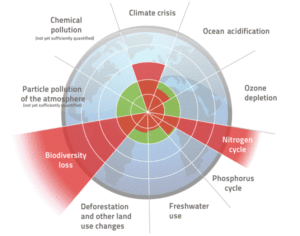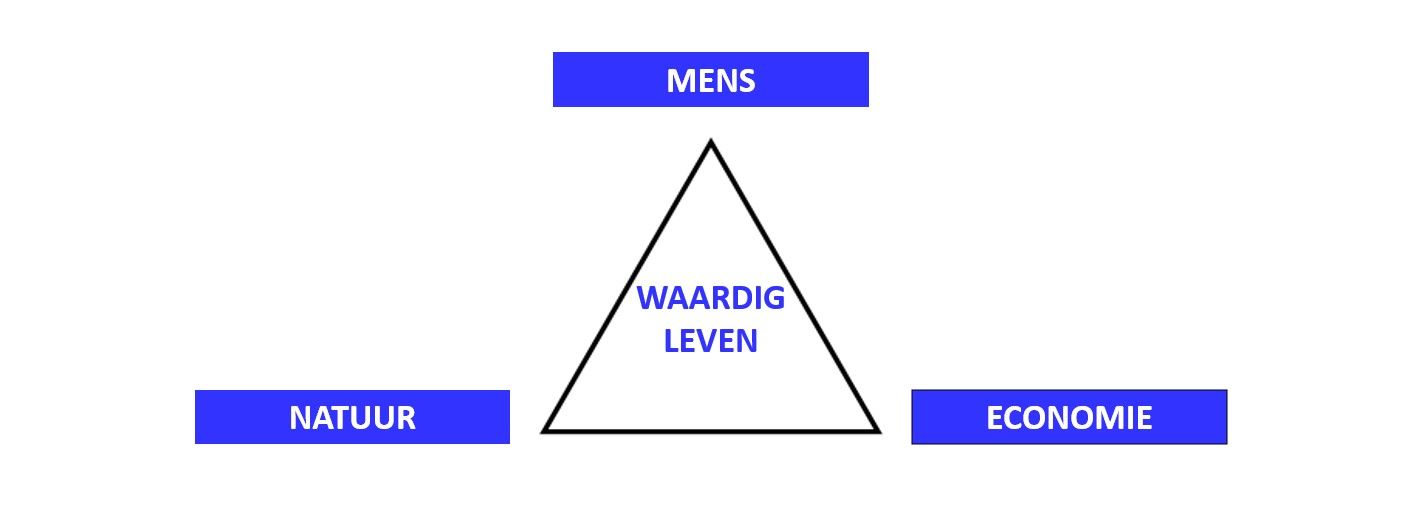What we need is a global science-policy body
More than 10 years ago, Rockström et al. [2009] came up with a particularly chilling message. They proposed a new approach to global sustainability because they assumed that anthropogenic pressure on the Earth System had become so high that an abrupt global environmental change could no longer be excluded. The biggest contribution of their research was the definition of planetary boundaries within which humanity can operate safely. Transgressing one or more planetary boundaries could be detrimental and even catastrophic.

Man is the biggest polluter on earth
The world is having to face a tremendous increase in the amount and variety of chemicals in use and figures are expected to grow. The generation of waste follows a similar trend with global plastic waste volumes, for example, likely to rise from ~260 million tons per year in 2016 to ~460 million tons in 2030 [Hundertmark et al. 2018]. The majority of them will end up in the World Ocean. There is no doubt that humans are the world’s worst polluters. No other animal generates so much waste.
When chemicals and waste are poorly managed, not only are valuable resources lost, but chemical pollution can cause a wide range of adverse effects on human health and ecosystem quality. On the one hand, substantial knowledge gaps hamper the sound management of a large fraction of used chemicals and, on the other, for those chemicals that are known as problematic, control measures have often been (too) limited [UN 2019; Wang et al. 2021]. In spite of early concerns raised by many scientists about the ubiquitous endocrine disrupting chemicals, these chemicals were identified as recently as 2019 as issues for potential joint action by the international community.
It is up to the polluters to clean up the planet, but it will not be easy to make them face up to their responsibilities. Twelve scientists, including the Belgian professor Adrian Covaci, have published a proposal for this necessary, but difficult task [Wang et al. 2021].
Existing science-policy interactions are flawed
Although the existing bodies perform important roles, Wang et al. [2021] point to four critical gaps that persist in the overall science-policy interface on international chemicals and waste governance. These gaps are particularly problematic as there is increasing scientific evidence of the destructive effect of chemical contamination on the environment and on human health.
First, there is the lack of coverage as existing bodies fail to cope with the large and ever growing occurrence of chemicals and waste; second, there is the lack of horizon scanning and early warning mechanisms. Most existing interface bodies do not monitor scientific developments nor do they provide early warnings on risks. Instead, many require external triggers to initiate action on specific issues. Thirdly, there is the lack of bi-directional communication. Most interface bodies focus on informing policymakers about scientific evidence on specific issues, but take limited action when it comes to forwarding communication about policy developments and policy-relevant scientific questions to the scientific community. Fourthly, the wider scientific community is not sufficiently involved. Participation of scientists and practitioners, such as lawyers and physicians in science-policy interactions remains limited.
The greatest gap in the world is the gap between knowing and doing (J. Maxwell)
Wang et al. [2021] advocate the rapid establishment of an overarching international body to facilitate and foster efficient bi-directional science-policy interactions on chemicals and waste. First and foremost, such a body will need to have an inclusive scope to cover all chemicals and waste and to avoid duplicating the efforts made by existing interface bodies (gap 1). It will need to produce robust and authoritative scientific assessments for the benefit of the decision makers. These assessments should be initiated through regular horizon scanning as well as early warning of new and emerging issues (gap 2). International bodies should also regularly inform the scientific community about international policy developments and highlight policy-relevant scientific questions by presenting them at major scientific conferences and informing researchfunding organisations (gap 3). This could help increase participation by the whole scientific community (gap 4).
The authors conclude: “… Setting up an overarching science-policy interface body on chemicals and waste will not solve all governance problems. However, it is a critical and necessary step toward strengthening informed policy-making for achieving the global sound management of chemicals and waste…”
Let us not forget Rockström et al. [2009]. Together we can still turn the tide!
References
Hundertmark et al. [2018]. Reusing plastics waste could become an important driver of profitability for chemical companies – Incumbent players need to make the right moves now to tap this opportunity, https://www.mckinsey.com/industries/chemicals/our-insights/how-plastics-waste-recycling-could-transform-the-chemical-industry
Rockström et al. [2009]. Planetary boundaries: exploring the safe operating space for humanity, Ecology and Society 14, 2, 32
UN [2019]. Global Chemicals Outlook II – From Legacies to Innovative Solutions: Implementing the 2030 Agenda for Sustainable Development, https://www.unep.org/resources/report/global-chemicals-outlook-ii-legacies-innovative-solutions
Wang et al. [2021]. We need a global science-policy body on chemicals and waste, Science 371, 6531, 774 – 776
Willett et al. [2019]. Food in the Anthropocene: the EAT–Lancet Commission on healthy diets from sustainable food systems, The Lancet 393, 447 – 492
